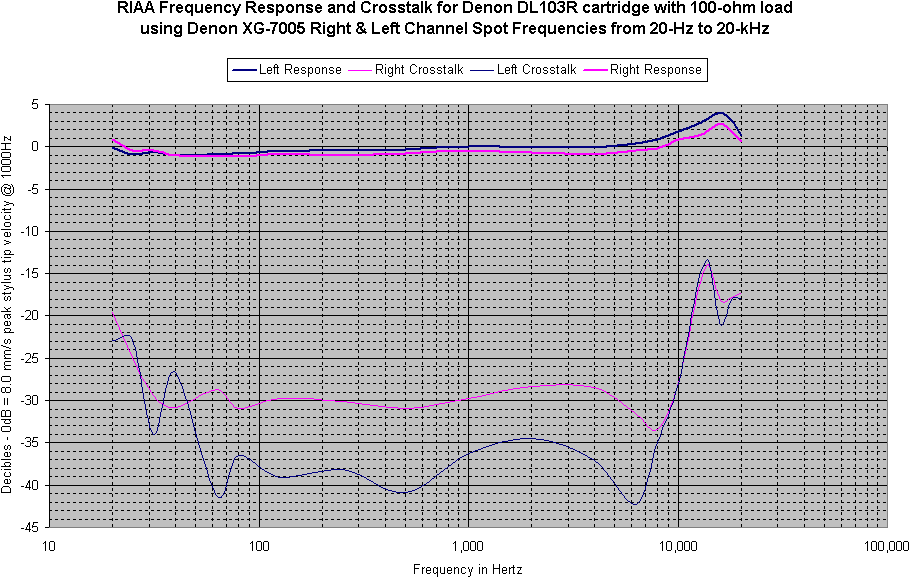I was thinking backwards when I said the cartridge had a rising response; in fact, it's the opposite. I was just remembering the spectrograph numbers that I was recording at the time I posted last, recording raw data and it completey escaped my mind that the relationship is inverse since I was recording negative numbers relative to 0dBfs. Silly me.
Anyways, I have carefully analyzed the recording chain, pre-amp and the DL-110 cartridge sample 1. I plan to provide another sample later. I already have a 2nd sample on hand.
Here is the graphed data. Please note it may appear to have large frequency response shifts because unlike most FR graphs, I choose to stretch a total of 10dB across the entire graph, where people normally stretch 25-40dB of increments across the same size graph. I do this in order to show maximum level of accuracy/detail. Please keep this in mind.

It's obvious why this cartridge sounds so neutral to me now. It has a gradual drop off on the top end. Especially if your speakers are very flat in response, or headphones for that matter, such a drop off like this has been documented by most of the leading speaker reproduction researchers such as Toole and others, that finds that the end listener response is almost always found to be perceived as more neutral due to recording and production habits of the source material. This treble roll off is almost exactly the response plotted by Toole as that preferred by listeners on average. The bass end is slightly rising. Starting around 200Hz and ending a 100Hz, there is a 1dB rise. From 100Hz to 20Hz, there is 1 more total dB rise. If one likes a strong bass, this is certainly a fitting cartridge. It's not a lot of extra bass - not enough to give any sort of loose or resonant effect. But it is enough to give a perceived change of impact.
I did extensive distortion analysis, manually, from 20hz-20khz, up the 5th order. I am providing 2nd and 3rd order data here, as after 3rd order, it was overall so low it was not even worth taking the time to graph it. This cartridge, using 1khz as the distortion reference point as Elison did, reveals this cartridge to have extreme low distortion, comparable to the lowest distortion examples I found on the Elison image files database.
According to the perceptual tests of which I have read where THD in this steady decreasing harmonic structure was true(every following harmonic is lower considerably then the pre-ceding one), the most sensative listeners in that condition needed at least 2 percent THD for it just become audible. The THD in the main band is about 0.7 percent, with it rising only into the mid to upper treble and into the deepest bass; both of which bands can tolerate far more distortion before it becomes audible. My conclusion is that distortion on this cartridge is inaudible, or very barely audible on the threshold of inaudibility, with inaudibility being more likely.
I would prefer that the cartridge was absolutely flat from one end to the other; at least it errors on the side of a perceived nuetral effect/balance.
I also analyzed IM distortion and other characteristics. I could find nothing to suggest this cartridge has any audible coloration besides the frequency response shown, and it happens, this response will be more likely perceived as neutral/natural as compared to a true flat response cartridge.
-Chris



